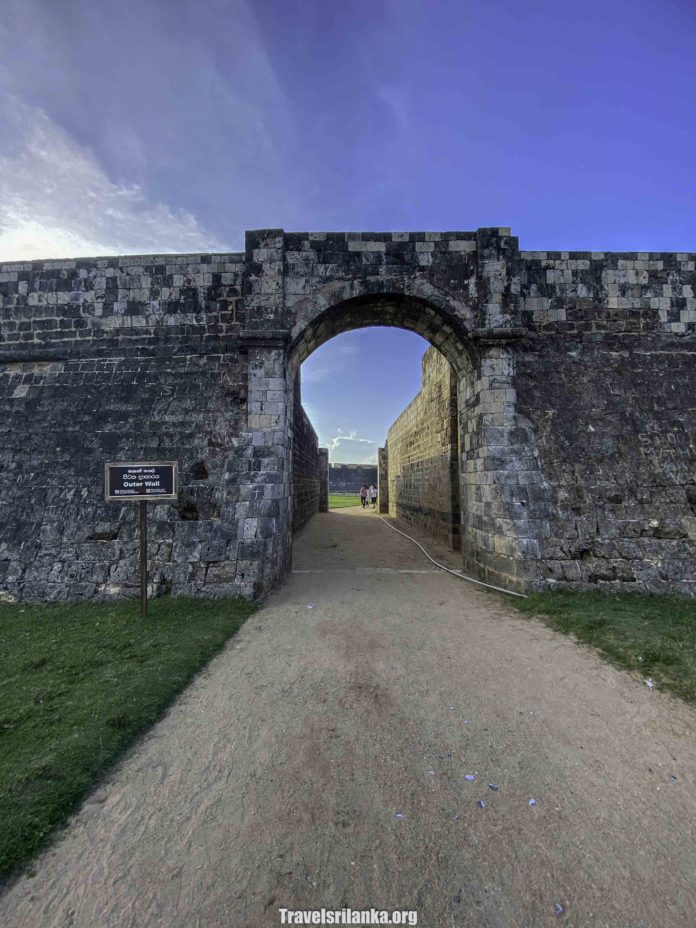Discover the history and resilience of Jaffna Dutch Fort, a strategic coastal stronghold with a rich past spanning colonial powers, conflict, and ongoing restoration efforts.
Portuguese Invasion and Early Years

The origins of the Jaffna Dutch Fort trace back to the Portuguese colonialists, who constructed the fort in 1619 during their conquest of the Jaffna Kingdom. This strategic stronghold endured for almost four decades, with the Portuguese successfully repelling multiple Sri Lankan rebellions. In 1658, the Dutch seized control of the fort in collaboration with the Sinhalese, using it as a pivotal base to bolster their own dominance.
Strategic Location and Geographic Significance of Jaffna Dutch Fort
Perched along the northern coast of Sri Lanka, the Jaffna Dutch Fort occupies a strategically vital position within the heart of the city of Jaffna. Its geographic location has made it a crucial point of control and defense throughout its history. Situated atop a rocky promontory, the fort overlooks the azure waters of the Jaffna Lagoon. This vantage point allowed its builders, the Portuguese and later the Dutch, to monitor maritime movements and safeguard the city from potential threats. The fort’s proximity to the Jaffna Peninsula’s tip underscores its strategic importance as a hub for trade, commerce, and military operations. Over the centuries, its unique geographic placement has molded its role as a fortress, encampment, and, today, a living testament to the region’s complex history.
Dutch Reinforcement and Evolution
Under Dutch rule, the fort underwent significant expansion and enhancement. Notably, the addition of defensive triangles in 1792 transformed the fort into its distinctive pentagonal form that is instantly recognizable from aerial perspectives. However, British colonial forces effortlessly gained control of the garrison a mere three years later, avoiding any military confrontation.
Fort Amidst Turbulent Times
The Jaffna Dutch Fort’s historical narrative is deeply intertwined with Sri Lanka’s socio-political landscape. During the nation’s struggle for independence from British rule, the fort became a focal point in the civil conflict between Tamil groups and the Sinhalese-dominated Sri Lankan Government. Government forces utilized the fort as an encampment, marking it as a significant landmark.
The Seige and Post-War Restoration
In a harrowing episode, the LTTE (Liberation Tigers of Tamil Eelam), also known as the Tamil Tigers, besieged the fort in 1990, forcing out government troops after a grueling 107-day siege. With the culmination of the Sri Lankan civil war in 2009, restoration initiatives were launched, facilitated by financial assistance from the Dutch government. The meticulous restoration of the fort’s coral, stone, brick, and mortar walls continues to this day.
Exploring the Fort
Present-day visitors to the Jaffna Dutch Fort are greeted by panoramic vistas from the ramparts, offering captivating views. Inside the main portal, an exhibition room immerses visitors in the archaeological history of the fort, deepening their connection to its storied past. To access this historical treasure, a nominal entry fee of US$2 for children and US$4 for adults is required.
Jaffna Dutch Fort: A Living Monument
The Jaffna Dutch Fort stands as a testament to the resilience and history of the region. Its transformation from a battleground to a place of preservation and cultural heritage symbolizes the enduring spirit of the people and their commitment to preserving their past for future generations.




[…] Source link […]